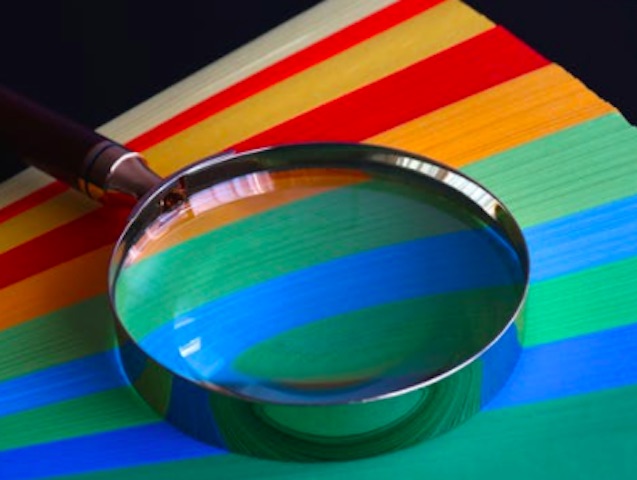Posted: Feb 19, 2018

Looking to acquire legendary bottles? The world’s foremost expert on detecting fake wines, Maureen Downey, shares six tips for ensuring you don’t end up the victim of fraud.
Maureen Downey has brought down some of the wine industry’s most notorious counterfeiters like Hardy Rodenstock and Rudy Kurniawan. Her business, Chai Consulting, works with law enforcement to discover fake wines that make their way into people’s cellars.
Downey also teaches seminars educating the public on how they, too, can spot counterfeit wine. Although one may think they need an entire forensics lab, Downey says, “With a few simple tools and a little bit of information, people can catch 90 percent of counterfeits.”
We asked Downey to share her tips on how to assess wines for authenticity. Grab a magnifying glass, and get ready to start sleuthing.
Know the person you’re purchasing from. Downey advises to not buy from an unlicensed broker, and that a customer should do their due diligence on even “reputable” businesses. Above all, keep a level head. If a deal seems too good to be true, then it probably is.
Blue lights can prove useful to assess authenticity. Certain coating agents used to brighten a wine’s paper label, like silicon, appear luminous under UV lamps. However, these chemicals weren’t utilized until the 1950s, so “if you’ve got a bottle from before the 1950s and the label shines like you’re at a disco under that UV light…that should be a red flag,” says Downey.
“Paper oxidizes at a steady rate. It won’t oxidize in one corner and not in another. Oxidation is something that should be consistent across an entire label.”
Printing techniques, one of Downey’s favorite things to evaluate, can be a dead giveaway of a fake wine.
“Historically, lots of fine wine [labels] were made with plate press,” she says. “One can very easily see the results of plate press printing under magnification, because it has an outline.”
Counterfeiters often use home inkjet printers to create labels. “If you end up seeing pixilation or colored spots all over the paper, those are the result of inkjet,” Downey says. “Those things are wrong.”
Also, inkjet printers require special paper for the ink to properly grip, according to Downey. Without it, ink will start chipping off when he or she starts to make the paper look aged. “Regular ink wouldn’t do that,” she says.
From labels baked in an oven to those soaked in nasty concoctions, “the false aging techniques are almost endless,” says Downey. However, key pieces of knowledge and some common sense can help.
“Paper oxidizes at a steady rate,” she says. “It won’t oxidize in one corner and not in another. Oxidation is something that should be consistent across an entire label.”
Also, check for uniformity in aging among a bottle’s multiple labels. Downey found examples where the counterfeiter would separately age the main label, back label and vintage label. “Put them all together, and they don’t make sense,” she says.
Finally, Downey says, “A lot of the staining is done when the label is still flat. But the ways that stains occur on a flat surface vs. a cylindrical surface are totally different.” Splats or drips on a label can say a lot about a wine.
A closure that’s in contact with red wine for several decades should have a deep stain. As bottles are usually stored on their side, the stain should extend toward the top of the capsule. Downey also looks at the branding on the capsule for signs of deceit.
“Sometimes, they’ll remove the cork using an Ah-So [a specialized extractor], scrape off the vintage and put a new vintage on,” which often amounts to simply changing one number, she says.
“I’ve got a case of ’61 Lafite here that [was] made by Rudy Kurniawan,” says Downey “When you look at it really closely, you can clearly tell what he did is he took the ‘4’ in ‘1964’ and scraped the cork to make it look like 1961.”
“If sediment is present but doesn’t move? It may be the result of fraudsters heating and baking it on to emulate the material’s accumulation over time.”
Sediment should be present in older red wines; a bottle lacking any solid matter should raise an alarm. Older wines that have been properly stored on their sides for decades should “show a visual correspondence of that story,” says Downey, even if a wine is visually shaken and most of the sediment is dispersed.
However, if sediment is present but doesn’t move? It may be the result of fraudsters heating and baking it on to emulate the material’s accumulation over time.
Along with some simple equipment like a blue light and microscope, the greatest tool one can possess is common sense. Downey says when people look at each of the above factors individually, they think, “that’s totally logical. But you put them together, that’s how you authenticate.”
By Shana Clarke
February 15, 2018
Source: Winemag.com
Go-Wine's mission is to organize food and beverage information and make it universally accessible and beneficial. These are the benefits of sharing your article in Go-Wine.com


The Wine Thief Bistro & Specialty Wines is a locally owned small business in downtown Frankfort, IL offering world class wines in a relaxed, casual gathering spot for friends and family. Offering world class virtual tastings and touchless carryout.
https://www.twtwineclub.com/aboutus
Go-Wine 25 Great Wineries in US selection prioritizes quality, value and availability.
www.go-wine.com/great-wineries-in-america
Tasting wine is a nice experience, but visiting the places in which wine is made is a magic moment. Available in New York City for touchless pickup.